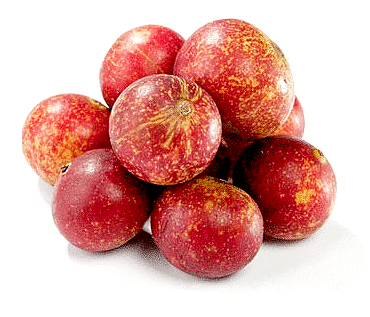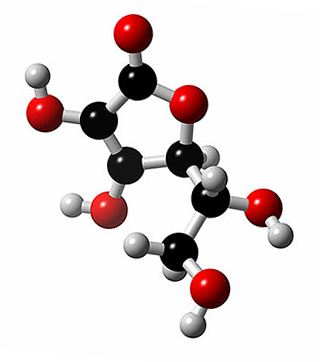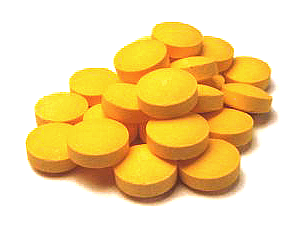Popular Articles
- Acne Treatment | 35 Herbal Remedies That Work
- Epsom Salt for Acne and Pimples
- 10 Vitamins for Acne
- When Does Acne Stop for Men, Women, & Teens?
- Tea and Acne - 4 Teas that Help
- 6 Supplements for Acne
- Acne Nodules - Get Rid of Them
- Peroxide for Acne - Hydrogen & Benzoyl Peroxide
- Natural Alternatives for Accutane
- Actimine Supplement Facts
- More Articles ...
 Vitamin C and AcneIn This Article
Vitamin C is a potent antioxidant for treating acne. It can also help reduce the side effects of tetracycline antibiotics used in acne treatment.
What Is Vitamin C?Vitamin C or ascorbic acid is an essential nutrient. This water-soluble vitamin is important in humans for several reasons especially because of its antioxidant property, its function as a cofactor for important enzymes, and its role in collagen synthesis.
Vitamin C can be obtained from both plant and animal sources. The richest plant sources of ascorbic acid are fruits and vegetables. Of these, two fruits, Kakadu plum, and Camu Camu contain very high amounts of the vitamin. While humans do not synthesize vitamin C, most animals do. Therefore, the raw animal liver is a very rich source of the vitamin and may be obtained from oysters, fried cod roe, and animal milk. Unfortunately, most of the vitamin C content of plant and animal sources is lost during cooking. Vitamin C decomposes during storage; it is destroyed by heat and enzymatic action during cooking and since it is a water-soluble vitamin, some of it also leaches into the cooking water. The recommended daily dose of vitamin C falls between 90 mg and 2 g per day. Vitamin C: Deficiency and ToxicityScurvy, which is the major result of vitamin C deficiency, can be prevented with 45 mg/day of the vitamin. However, experts suggest at least 90 mg/day for optimal health and to lower the risk of developing cancer, cataracts, and heart diseases. Scurvy results from the synthesis of unstable collagen due to vitamin C deficiency. This means that the skin is softened and spongy and also prone to discolorations. Scurvy can also cause bleeding from mucosal surfaces and open, festering wounds on the skin. Since animals that produce vitamin C do so at concentrations far above the ones listed above, some researchers believe humans can benefit from the healing powers of megadoses of vitamin C. However when high doses of vitamin C are used, it can no longer be described as supplementation but as an actual drug to treat diseases. Vitamin C is used in the prevention and treatment of scurvy and gout. It is also used to lower the risk of stroke. Because vitamin C is soluble in water, there is only a very low chance of vitamin C toxicity since it is quickly excreted in the urine. Still, high doses of vitamin C can cause nausea, vomiting, diarrhea, headache, fatigue, insomnia, and skin rashes in infants. Vitamin C supplements are sold in different forms including powder, tablets, capsules, and caplets. It can also be included in multivitamin formulations and combination antioxidant formulations. The Antioxidant Property of Vitamin CL-ascorbate is a very potent reducing agent. It quickly mops up harmful free radicals such as reactive oxygen species. In the process, L-ascorbate is oxidized to L-dehydroascorbate. This oxidized form can be converted back to L-ascorbate. The reduction process of L-dehydroascorbate back to L-ascorbate is managed by glutathione and certain other enzymes in the body. This reaction also produces semidehydroascorbic acid which can potentially create reactive oxygen species. However, semidehydroascorbic acid reacts poorly with oxygen. Instead of producing superoxide which is a harmful free radical, two molecules of semidehydroascorbic acid combine to form L-ascorbate and dehydroascorbate which is then reconverted to L-ascorbate by glutathione. All of these reactions mean that the antioxidant activity of each molecule of vitamin C is amplified because the byproducts of its antioxidant reactions are reconverted back to the active form of vitamin C. Although this is typical of reversible antioxidants, vitamin C overcomes the limitation of this ability because it does not produce superoxide or any other harmful free radicals which can harm cells. How Vitamin C Helps AcneVitamin C is useful in acne treatment for two major reasons: it serves as an antioxidant and contributes to collagen synthesis. As an antioxidant, vitamin C removes harmful free radicals and reducing them to harmless compounds.
When free radicals are left on the skin, they break down the proteins and fatty acids making up the skin and disturb the normal pH of the skin. These effects are cumulative and can change the nature of the skin. When free radicals harm the sebaceous gland, they can increase the production of sebum and leave the skin open to bacterial infections. Acne-causing bacteria such as Propionibacterium acnes will only worsen the condition of the skin by causing inflammatory acne lesions, increasing the accumulation of dead skin cells, and clogging skin pores. To prevent this chain reaction that leads to acne breakouts, vitamin C can help mop up the free radicals before they damage the skin. This keeps the skin protected and prevents the formation of acne lesions.
Also, vitamin C contributes to the production of collagen. Collagen is the protein making up the skin. When it is not produced in the right amounts, the nature and integrity of the skin are affected and the skin becomes susceptible to acne breakouts. The importance of collagen is evident in the symptoms of scurvy which is a skin disease complex caused by vitamin C deficiency. Without vitamin C, the collagen produced becomes unstable and cannot fulfill the functions needed for the skin as a protective barrier. When vitamin C levels are low, festering wounds form on the skin due to the softening of the skin tissues. Low levels of vitamin C will also cause skin discoloration and the appearance of pus-filled inflamed lesions on the skin. These are all symptoms similar to acne breakouts. Therefore, vitamin C is required for the skin to properly function by adequately producing stable collagen and repairing skin wounds. Vitamin C in Antibiotic Therapy for AcneVitamin C also has a secondary supportive role in acne treatment, especially with tetracycline antibiotics. Tetracycline and its analogs, such as minocycline and doxycycline, are often used to treat acne because they are effective against acne-causing bacteria such as P. acnes and Staphylococcus epidermis. However, these tetracycline antibiotics have one common side effect: they make the skin photosensitive. This means that when using tetracycline antibiotics to treat acne, there is an increased chance that there will be hyperpigmentation. The use of tetracycline antibiotics can cause the staining of soft tissues like the skin as well as bones and teeth. Even the thyroid gland can be stained. Since the pigmentation produced by these antibiotics is caused by oxidation reactions, antioxidants such as vitamin C can prevent this side effect. This theory was proven by a study published in the Journal of Esthetic and Restorative Dentistry in 2007 which found vitamin C supplementation to help prevent the hyperpigmentation caused by minocycline. How to Use Vitamin C for Acne Treatment
While topical preparations may provide immediate and local antioxidant benefits, oral vitamin C provides more and lasting benefits. The dosage of oral vitamin C supplements is usually given as 75- 90 mg/day. However, larger doses (but not megadoses) can be used since the vitamin is water-soluble and is safe. |
|||||||
| Next Article: Aloe for Acne Treatment |





 The active form of vitamin C is L-ascorbate (ascorbate is the functional unit of ascorbic acid). L-ascorbate is a weak acid that is structurally similar to simple sugars such as
The active form of vitamin C is L-ascorbate (ascorbate is the functional unit of ascorbic acid). L-ascorbate is a weak acid that is structurally similar to simple sugars such as  Damage to the skin from free radicals is one of the root causes of acne. Since the skin is exposed to environmental toxins and also serves as an exit for the body to push out systemic toxins, it needs to be constantly protected from free radicals.
Damage to the skin from free radicals is one of the root causes of acne. Since the skin is exposed to environmental toxins and also serves as an exit for the body to push out systemic toxins, it needs to be constantly protected from free radicals. Both oral supplements and topical preparation of vitamin C can be used to treat acne. Where possible, the two dosage forms should be used.
Both oral supplements and topical preparation of vitamin C can be used to treat acne. Where possible, the two dosage forms should be used.